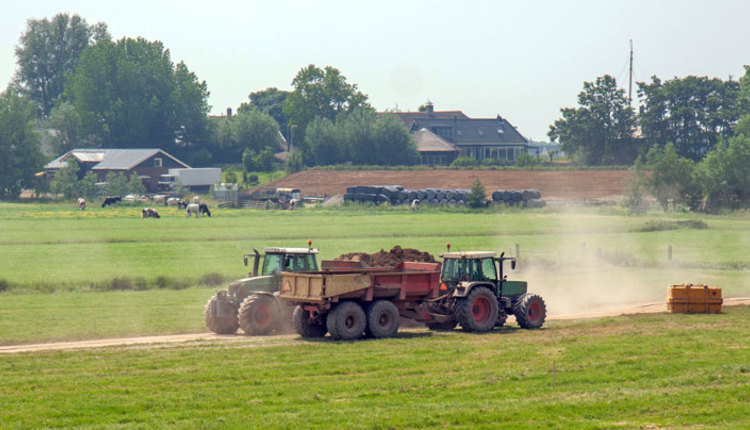The author is the president of Menke Consulting LLC, an agronomic and environmental consulting firm in Greenville, Ohio.
There was a period of time when phosphorus was rarely a consideration with manure applications — it was all about nitrogen. Now nitrogen is a secondary consideration and phosphorus is paramount.
The Environmental Protection Agency (EPA) was concerned about nitrates in drinking water, so nitrogen rates from manure and biosolids were what controlled application rates. Yes, phosphorus created nuisance issues in lakes because it was typically a first-limiting factor to algal growth. A little in the water caused a bloom and interfered with boating and fishing. With a crack down on phosphorus being discharged through National Pollutant Discharge Elimination System (NPDES) permits and the arrival of no-till farming over 30 years ago, we thought we saved the lake!
Our victory was short-lived, though. No-till greatly reduced soil erosion, and as a result, phosphorus attached to soil particles. Now a new form of phosphorus emerged as the real problem: soluble phosphorus. Along with that came the HABs — toxic harmful algal blooms. This took place just when we thought it was safe to go back into the water.
Setting an upper limit
Apparently, algae like soluble nutrients, just like corn does. And since nitrogen and potassium are very soluble, they are found in most agricultural stream and lake waters. Since phosphorus is generally not very soluble, a little makes a big difference. Based on studies done on Michigan soils, it was determined many years ago that soil test levels of 150 parts per million (ppm) or higher (Bray P1 test method) provided a critical level of soluble phosphorus in runoff water.
The race was on for each state to get in line to adopt this nice, round number as their upper limit for soil test phosphorus that would impact water quality. Some states approached it more thoughtfully and came up with different numbers and even more scientific ways to predict soluble phosphorus leaking from fields.
But, at the end of the day, governments like to think and express regulations in simple terms, so having a “number” won out. Most agronomists and water quality specialists know it is not that simple.
There are many variables
Now it is our job to help farmers navigate the phosphorus issue. And it couldn’t be more confusing: What’s the difference between phosphorus (P) and phosphate (P2O5)? Or parts per million and pounds per acre?
Are my phosphorus levels too high — and by whose standards? When am I allowed to put manure on this field? What do these Bray P1 results mean, or what is the Mehlich III test method? Or what about Morgan or Olsen phosphorus tests? Is manure phosphorus as available as fertilizer phosphorus?
There is not enough space to answer these questions here, but just know that it is critical to understand how phosphorus is being reported (units and form) on your soil test report and the test method used. In addition, you need to know if the actual test method is reported, or if it is a calculated “equivalent.” For example, some soil test laboratories will run the Mehlich III extraction method, multiply it by 0.7, and report it as a Bray P1 value.
As I mentioned in my previous article in the February 2021 issue, phosphorus in manure is much less soluble than that in fertilizers. Yet, it is very available to the plant due to the organic matrix that is broken down by soil microbes to release phosphorus when plants need it. So, I’ll go on record by saying that replacing chemical phosphorus with manure phosphorus will be a benefit to water quality.
Unfortunately, there appear to be larger forces at work that are frustrating our efforts to limit phosphorus from entering surface waters. Some of those being implicated are from the techniques that worked to our benefit not that many years ago.
Multiple studies document the surface accumulation of phosphorus under long-term no-till conditions. This environment is created from surface fertilizer (or manure) applications and from the residue itself that breaks down and releases soluble phosphorus. The same is being seen from killed cover crops releasing the nutrient.
The other situation that came with the no-till farming boom was the broad use of glyphosate herbicides. Suffice it to say, there are interesting research articles concerning glyphosate’s impact on populations of harmful algae species.
By understanding these phosphorus relationships, methods, and terminologies, we can manage them. At the same time, we will become better stewards of the environment.
This article appeared in the May 2021 issue of Journal of Nutrient Management on page 26.
Not a subscriber? Click to get the print magazine.









